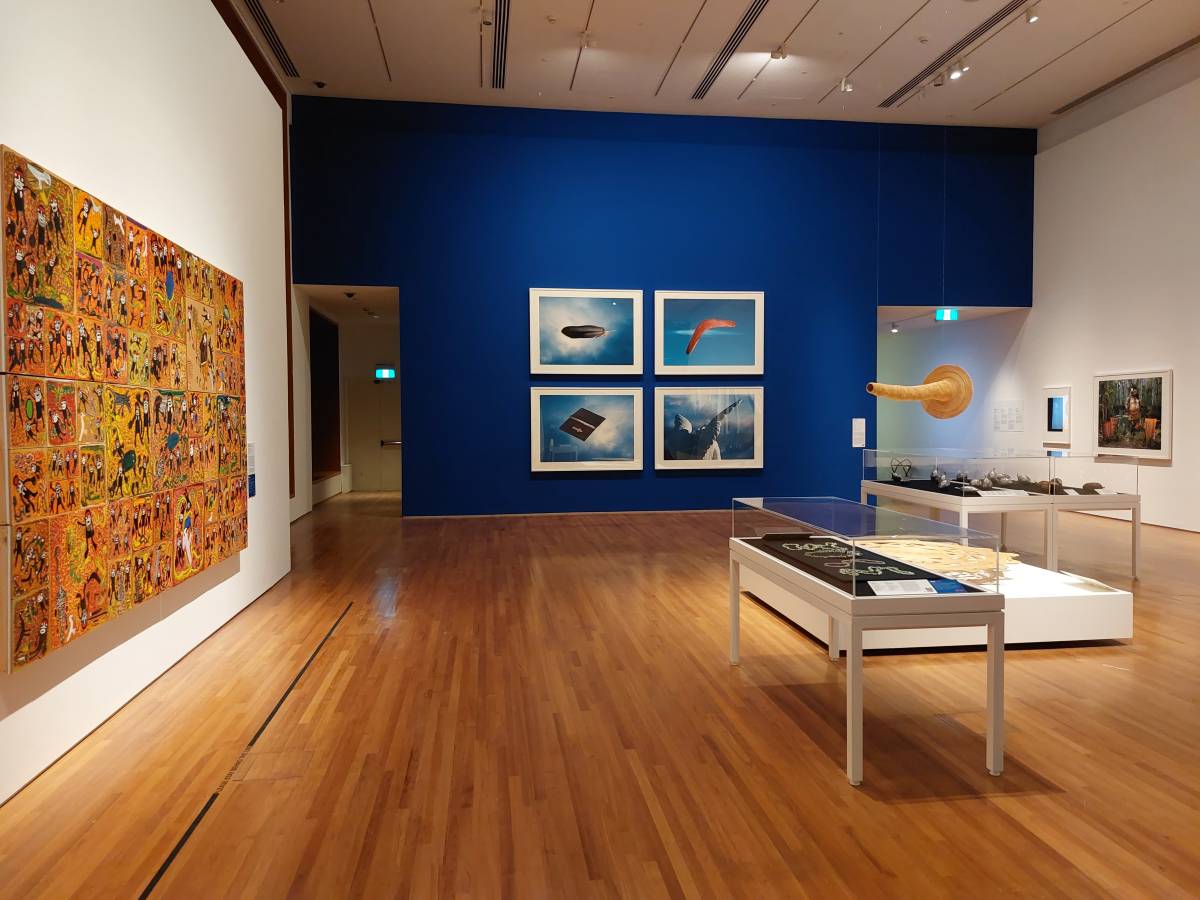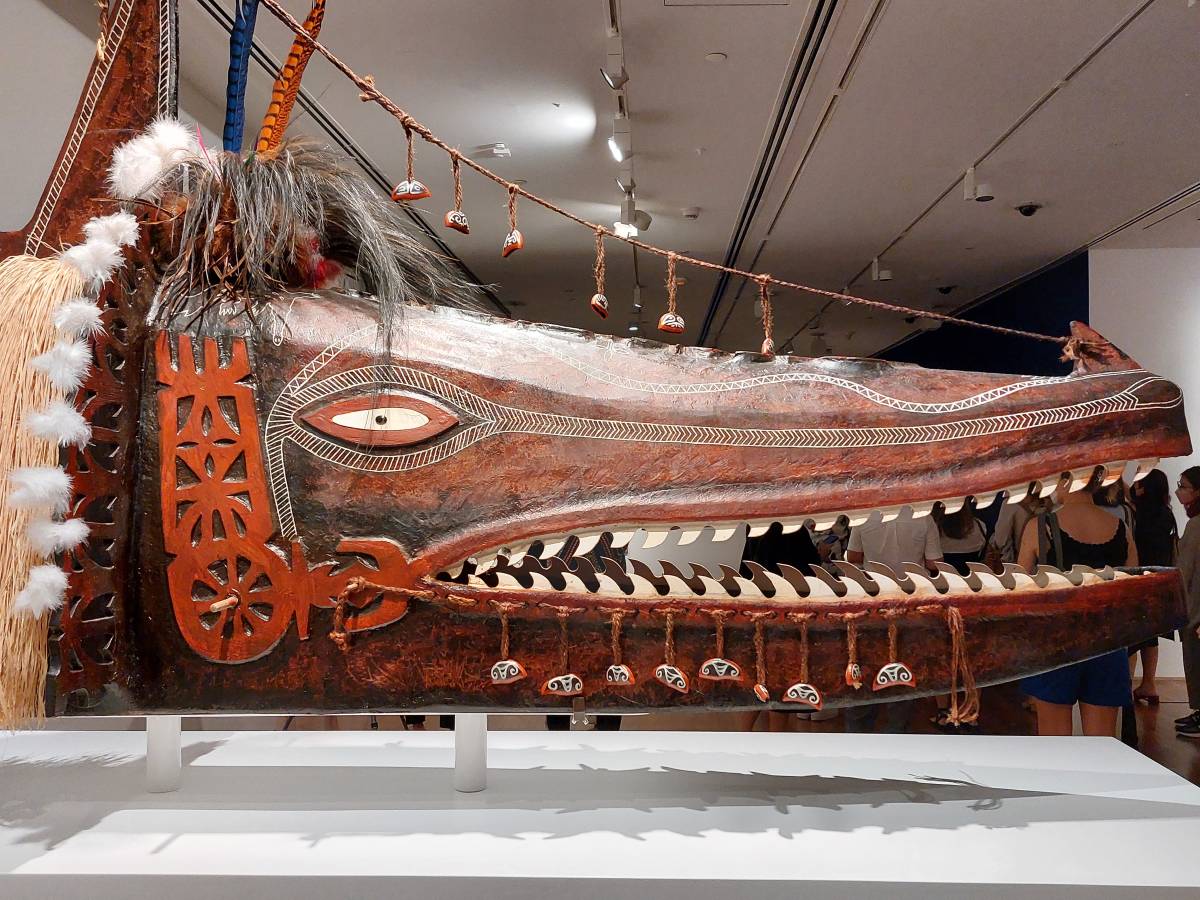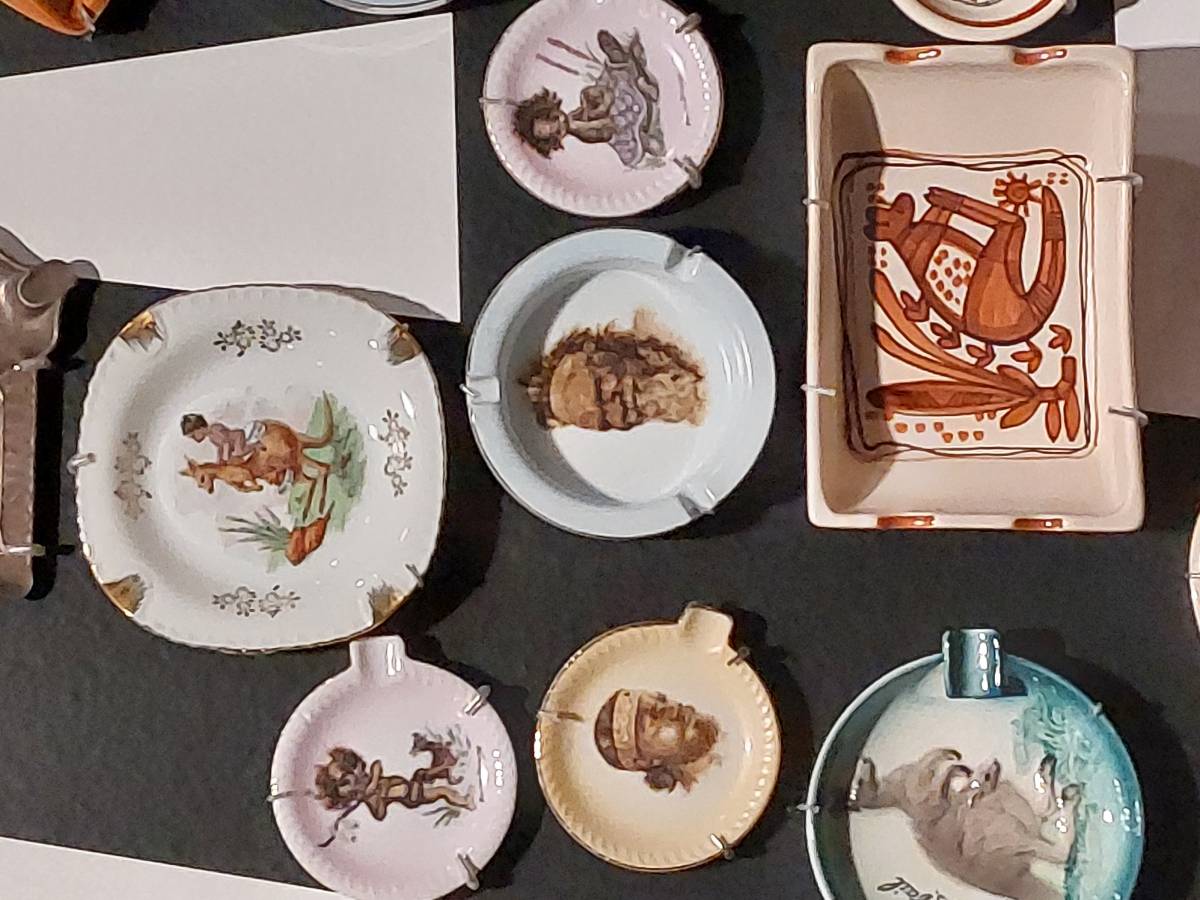National Gallery Singapore Premieres Asia’s Largest Exhibition of First Peoples Art of Australia
The extensive survey introduces audiences to the beauty, culture and historical influences behind Aboriginal and Torres Strait Islander art and its resonance with Southeast Asia
19th century Zenadth Kes/Torres Strait Islands, Queensland; shell, resin, human hair, fibre string and natural earth pigment on wood; National Gallery of Australia, Kamberri/Canberra; Purchased 2006; 2006.1
Although the maker’s details were not recorded, this work is thought to be from Saibai Island in the Zenadth Kes/Torres Strait Islands where masks stylistically like this rare human-faced one were produced centuries ago.
(Singapore, 26 May 2022) National Gallery Singapore invites visitors to see the rich artistic practice of the world’s oldest living culture with its latest exhibition, Ever Present: First Peoples Art of Australia. The largest exhibition of Aboriginal and Torres Strait Islander art to travel to Asia gives audiences a rare and comprehensive look into First Peoples of Australia’s culture, history, and social action in the present.
Ever Present showcases over 170 artworks drawn from the collections of the National Gallery of Australia and The Wesfarmers Collection of Australian Art, including many of their most significant artworks. These visually captivating works produced by over 150 Aboriginal and Torres Islander artists highlight the diversity of First Peoples art; with works as far back as 1890 until the present, ranging from paintings, video installations, bark paintings, to sculptures and cutting-edge contemporary art.
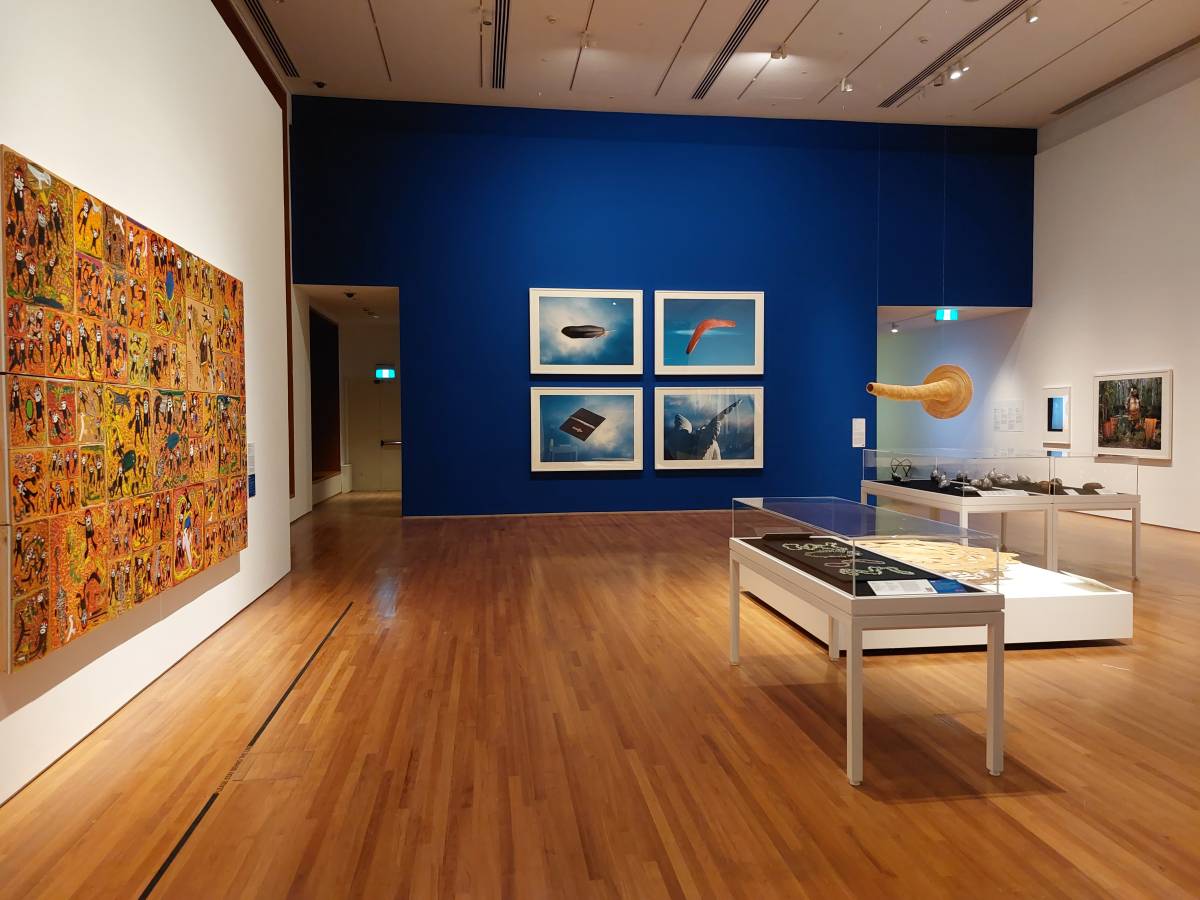
Ever Present: First Peoples Art of Australia, National Gallery Singapore 2022
Exploration of First Peoples art of Australia: Exhibition highlights consists of six themed sections give insight into key aspects of Aboriginal and Torres Strait Islander life and culture through Ancestors + Creators, Country + Constellations, Community + Family, Culture + Ceremony, Trade + Influence and Resistance + Colonisation.
The exhibition celebrates Aboriginal and Torres Strait Islander art, while also grappling with Australia’s complex histories. Art emerges as a tool of resistance, asserting deep connections to Country, as well as using wit and satire to encourage conversations about current key issues; these works challenge stereotypes about First Nations people and what defines their art. The exhibition also illuminates their historical links with Southeast Asia, through works highlighting the regions’ trading encounters by sea, and recent artistic exchanges in batik.
 Dr Eugene Tan, Director of National Gallery Singapore, (left) says, “Ever Present: First Peoples Art of Australia is an embodiment of National Gallery Singapore’s ambition to create dialogue between the art of this region and the world. Through this showcase, our audiences are offered a rare opportunity to learn the stories of diverse peoples and foster a deeper appreciation for different forms of artistic expression. We are proud to work with National Gallery of Australia and The Wesfarmers Collection of Australian Art to display some of their very best works to inspire our visitors to understand the rich history, culture, and artistic practices of First Peoples of Australia. Ever Present encourages visitors to reconsider their understanding of Southeast Asia through our historical ties with First Peoples of Australia, to reflect on our shared colonial history alongside ongoing conversations over decolonisation and drawing attention to artistic expressions and voices marginalised by conventional art historical narratives.”
Dr Eugene Tan, Director of National Gallery Singapore, (left) says, “Ever Present: First Peoples Art of Australia is an embodiment of National Gallery Singapore’s ambition to create dialogue between the art of this region and the world. Through this showcase, our audiences are offered a rare opportunity to learn the stories of diverse peoples and foster a deeper appreciation for different forms of artistic expression. We are proud to work with National Gallery of Australia and The Wesfarmers Collection of Australian Art to display some of their very best works to inspire our visitors to understand the rich history, culture, and artistic practices of First Peoples of Australia. Ever Present encourages visitors to reconsider their understanding of Southeast Asia through our historical ties with First Peoples of Australia, to reflect on our shared colonial history alongside ongoing conversations over decolonisation and drawing attention to artistic expressions and voices marginalised by conventional art historical narratives.”
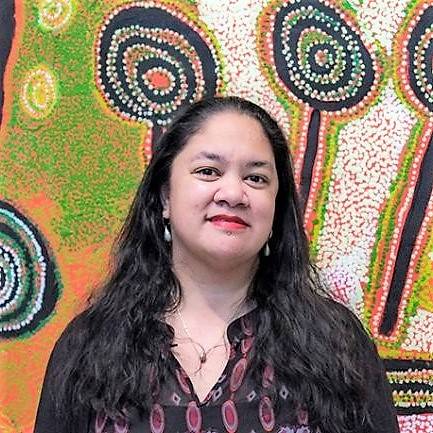 This exhibition is proudly supported by Touring Partner Australian Government through the Office for the Arts, Lead Partner Singtel and Strategic Partner Cultural Matching Fund. Tina Baum, (right) Curator of Aboriginal and Torres Strait Islander Art at National Gallery of Australia, says, “The history and cultures of Aboriginal and Torres Strait Islander people is a crucial part, not just of Australia’s history, but globally as well. Ever Present is an opportunity to share our cultures with an international audience and we are very excited to premiere the largest exhibition of First Nations’ art to travel to Asia at National Gallery Singapore. To fully understand the richness, diversity and depth of Aboriginal and Torres Strait Islander art and culture would take many generations and lifetimes. But to appreciate it only takes a moment.”
This exhibition is proudly supported by Touring Partner Australian Government through the Office for the Arts, Lead Partner Singtel and Strategic Partner Cultural Matching Fund. Tina Baum, (right) Curator of Aboriginal and Torres Strait Islander Art at National Gallery of Australia, says, “The history and cultures of Aboriginal and Torres Strait Islander people is a crucial part, not just of Australia’s history, but globally as well. Ever Present is an opportunity to share our cultures with an international audience and we are very excited to premiere the largest exhibition of First Nations’ art to travel to Asia at National Gallery Singapore. To fully understand the richness, diversity and depth of Aboriginal and Torres Strait Islander art and culture would take many generations and lifetimes. But to appreciate it only takes a moment.”
Wesfarmers is committed to supporting a richer understanding across the community of Aboriginal and Torres Strait Islander cultures, histories, and aspirations. “Ever Present includes some of the most important contemporary and historical art produced in Australia, celebrating Aboriginal and Torres Strait Islander artists and their central role in defining Australia and our national identity.”
"After a successful debut in Australia," says Wesfarmers Chairman Michael Chaney AO, "we are thrilled that Singapore will be the first international destination for this landmark exhibition.”
Mr Yuen Kuan Moon, Singtel Group CEO said, “We are proud to support Ever Present: First Peoples Art of Australia, especially given our ties with Australia. We are deeply inspired by how the First Peoples of Australia use their art to pass on important traditions and to tell meaningful stories in contemporary times. This speaks to Singtel’s group purpose, of inclusivity and diversity – which are key to encouraging new ideas and innovations – as we seek to advance and make the world more sustainable for future generations. We invite audiences to visit this exhibition to experience and be enriched by the extraordinary art and culture of First Peoples of Australia.”
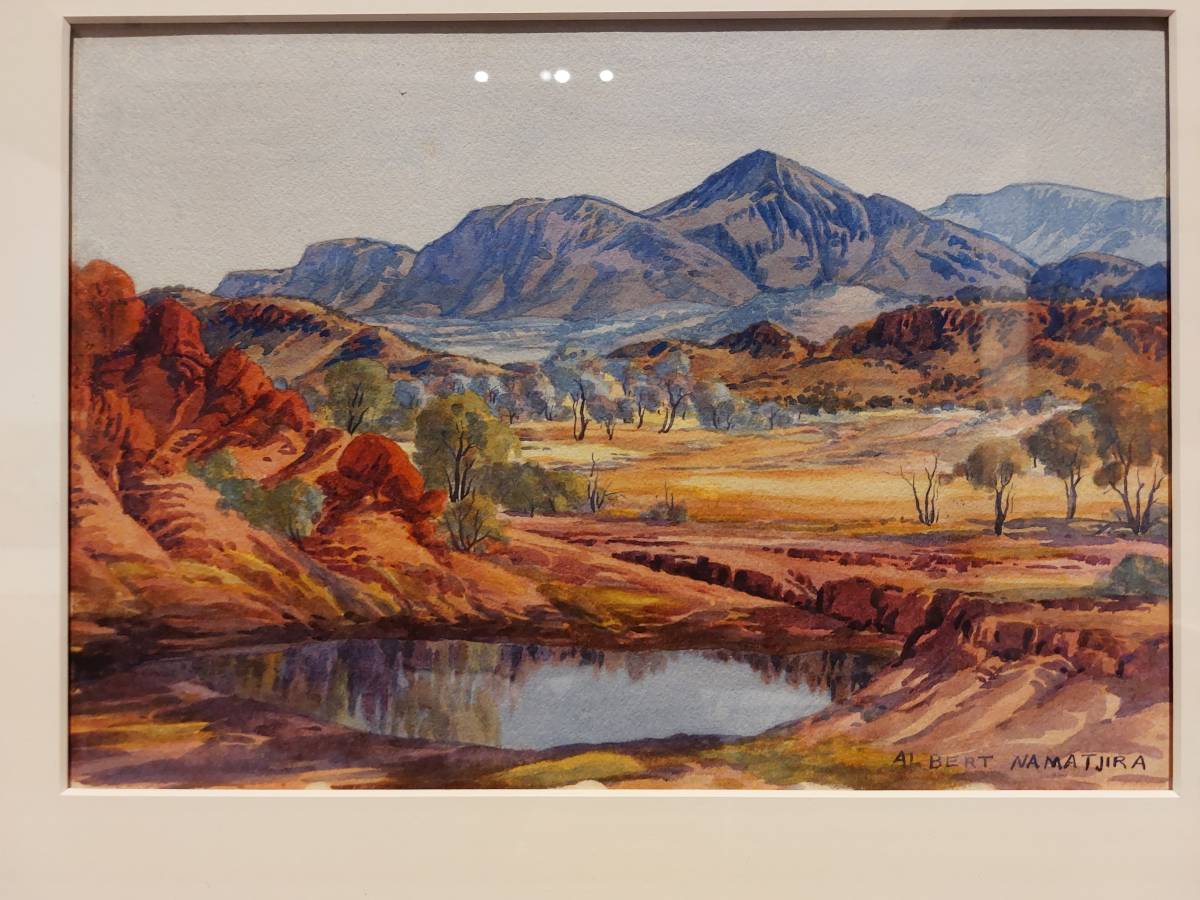
Albert Namatjira, Western Arrarnta People, Australia 1902 – 1959; Waterhold, MacDonnell Ranges, c 1950 Ntaria/Hermannsburg, Central Desert, Northern Territory; painting in watercolour over underdrawing in black pencil on paper; image 26 x 37.5cm
Visitors can begin their journey by viewing pieces by Albert Namatijira, the first Aboriginal artist to become widely popular in Australia. Widely recognised as a pioneer of contemporary Aboriginal Australian art, Namatijira blended European landscape styles to capture important sites in his Ancestral lands. In Gum tree and sandhill, Namatijira highlights the intricate connections to the site of his ancestral lands (Country), as the gum trees, like so many other large trees in Country, are believed to be Ancestor beings.
In the same gallery, visitors will be entranced by Yam awely, an immersive painting almost 5 meters in length, by Emily Kame Kngwarreye, one of the greatest artists of the desert painting movement in Central Australia. A prominent female artist, Kngwarreye took an ever-evolving approach to art making, only picking up acrylic painting in her 70s. Kngwarreye’s paintings often feature the yam plant, expressively reflecting her knowledge of the growth cycle of this essential food source from the desert environment.

Tony Albert, Girramay/Yidinji/Kuku-Yalanji peoples, ASH on Me, 2008, vintage ceramic ashtrays on vinyl lettering, overall 150 x 150 cm, National Gallery of Australia, Kamberri/Canberra, purchased 2009, © the artist and Sullivan+Strumpf, Gadigal Nura/Sydney: "ASH on Me is about having a cigarette put out on you," Tony relates. "It’s politically charged … There was something so sinister about an ashtray that I felt needed a work of its own."
Ever Present also has a diverse range of artworks that showcase how the past continues to inform cultural and social action in the present. A prime example of how contemporary artists celebrate cultural practices is seen in the special mixed media commission, Untitled (walamwunga.galang) by renowned Wiradjuri/Kamilaroi artist, Jonathan Jones. Using large-scale sandstones grindstones and a soundscape in Wiradjuri language, the artwork emphasises the sophistication of Aboriginal agricultural economy, which was erased by colonial narratives of Aboriginal people as hunters-gatherers.
Ever Present also highlights Southeast Asia’s history with the First Peoples of Australia. These include artworks from northern Australia which reflect exchanges that existed for centuries prior to colonisation. They provide evidence of a robust trade in trepang or sea cucumber, between traders departing from the port of Makassar in South Sulawesi (Indonesia) to the north coast of Australia. From the 1970s, the technique of batik was introduced to several Aboriginal Communities in Central Australia, sometimes through direct exchanges and collaborations with artists in Indonesia. Ever Present showcases examples of this cultural exchange, through artworks that highlight each Community’s distinctive style.
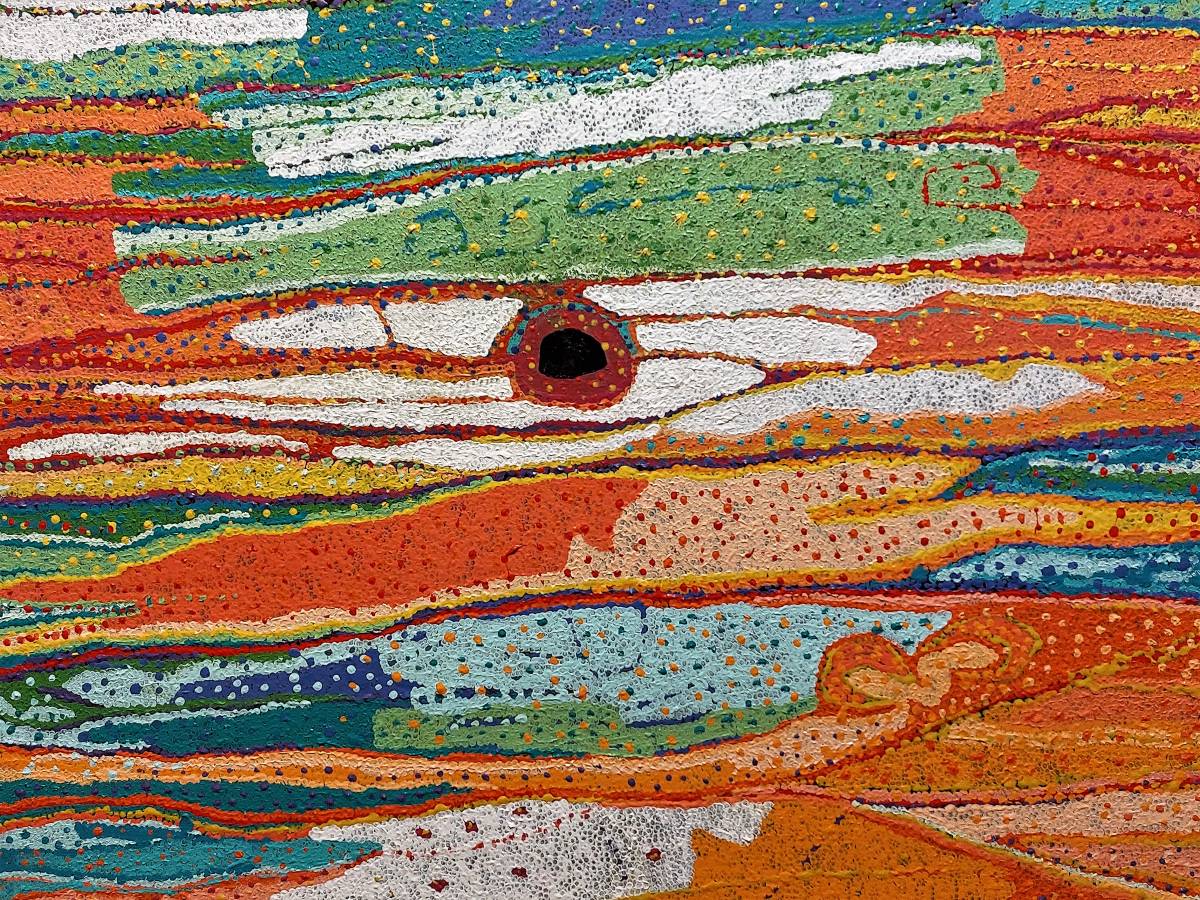
Daniel Walbidi, Mangala/Yulparija peoples; Born Biyadanga Community/La Grange, Kimberley, Western Australia 1983
Relating the art and histories of Southeast Asia and the First Peoples of Australia: Southeast Asia Gallery Trail
For the duration of Ever Present, five contemporary artworks by Aboriginal artists will be on display in the Gallery’s UOB Southeast Asia galleries. This provides a unique opportunity to reflect on similarities and differences between the histories and art of Southeast Asia and the First Peoples of Australia including their shared experience of colonialism. Christopher Pease’s painting, Wrong side of the Hay (a deserted Indian village), directly references a 1798 engraving of a landscape in Western Australia. However, nothing in the original image reveals that this seemingly peaceful scene was the result of the forced displacement of the Nyoongar people from their Ancestral lands.
This work is placed in the UOB Southeast Asia Gallery 3, alongside similar images of picturesque and unoccupied landscapes in Southeast Asia; visitors are invited to reflect on what else may have been omitted from the artworks which display no traces of colonisation or industralisation.
Programmes, Curator Tours & Activities
Visitors interested in diving deeper into the histories and culture of First Nations can attend art historical lectures, curator talks, artist dialogues and curator tours throughout the exhibition’s duration. Visitors can also look forward to performances, including Painting the Dance by Mariaa Randall and Henrietta Baird, and a special edition of the Gallery’s Resonates with Residency programme, featuring Singapore-based artist, Syafiq Halid. Visitors may also learn more about Ever Present through its related programmes via the Art Journeys function at https://web.nationalgallery.sg/ or through the Gallery’s new interactive Activity Cube and Digital Self-Service Kiosks. Ever Present: First Peoples Art of Australia will run from 27 May 2022 to 25 September 2022 at Singtel Special Exhibition Gallery, City Hall Chamber and UOB Southeast Asia Gallery. General Admission (free for Singaporeans and PRs) applies. Viewer discretion is advised for select artworks.
